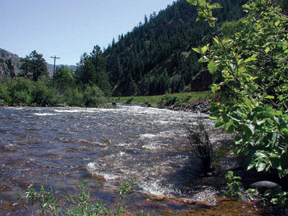 A few weeks ago, the Associated Press released a three-part series of articles about how drinking water supplies across the country contain a chemical cocktail of discarded pharmaceuticals that could be affecting human development and the environment. The investigation focused on a number of cities and got a lot of others talking about their own water supplies and screening processes, which really can't remove these chemicals.
A few weeks ago, the Associated Press released a three-part series of articles about how drinking water supplies across the country contain a chemical cocktail of discarded pharmaceuticals that could be affecting human development and the environment. The investigation focused on a number of cities and got a lot of others talking about their own water supplies and screening processes, which really can't remove these chemicals.Along those lines, last week I called Steve Comstock of Fort Collins Utilities, who manages the city's wastewater plants, and he told me the city doesn't really have great (or any) data on this topic, which isn't that unique. So, it was a little surprising to see the Coloradoan optimistically report this past weekend that Fort Collins' water is "mostly free" of pharmaceuticals. In the article, one utilities staffer said the city's place in line to grab water -- upstream of other cities -- means we have a pretty clean source even as we discharge our own chemicals for other people, downstream, to drink. That sounds like a pretty glib and maybe misleading assessment.
A 2005 U.S. Geological Survey report showed that chemicals worth concern are showing up in the upper reaches of the Cache la Poudre River, despite its relatively pristine surroundings. The report also detailed how some Colorado streams now contain "intersex" fish downstream of sewage treatment plants. The Coloradoan story makes passing mention of the report glossing over impacts because the contamination was only in "trace" amounts.
A recent National Park Service study also found intersex fish in Rocky Mountain National Park, proving that chemicals are accumulating even in wilderness areas. So, despite the city's words of encouragement, "mostly free" is still cause for concern and continued studies. Exposure to trace amounts over people's and animals' lifetimes are what many researchers believe lead to alarming development impacts. And regardless of how far upstream anyone lives, chemicals are getting into our bodies and the environment.

No comments:
Post a Comment